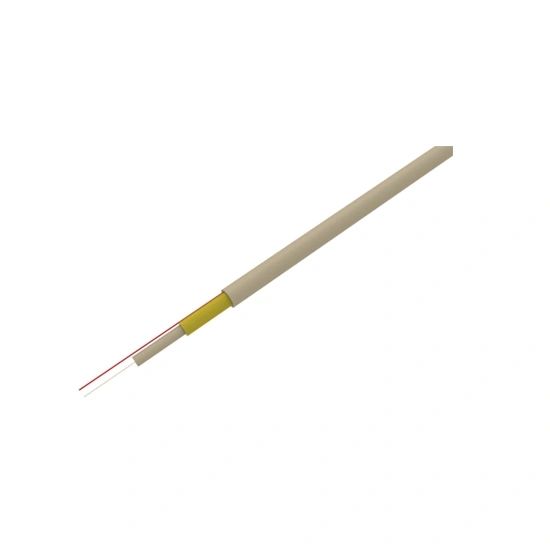Understanding the Limitations and Solutions for Indoor Optical Cable Distance

Indoor optical cable has revolutionized the way we transmit data within buildings, offering faster and more reliable connections. However, despite its advantages, indoor optical cable is also subject to distance limitations. In this article, we will explore the challenges posed by these limitations and various methods to extend the distance covered by indoor optical cables.
1. Distance Limitation of Indoor Optical Cable
The distance limitation of indoor optical cable is primarily determined by two factors: attenuation and dispersion. Attenuation refers to the loss of optical power as it travels through the cable, while dispersion refers to the spreading out of light pulses as they propagate through the cable. Both these factors contribute to signal degradation and ultimately impose limitations on the maximum distance that can be covered by the cable.
Attenuation is caused by various factors such as absorption, scattering, and imperfections in the cable itself. It becomes more prevalent as the wavelength of light increases. Dispersion, on the other hand, can be either chromatic or modal. Chromatic dispersion occurs due to the different wavelengths of light traveling at different speeds, while modal dispersion results from light rays taking different paths within the cable.
2. Methods for Extending Indoor Optical Cable Distance
To overcome the distance limitations of indoor optical cable, several methods have been developed:
2.1 Fiber Amplification
Fiber amplification, specifically by using erbium-doped fiber amplifiers (EDFAs), is an effective method to extend the distance of indoor optical cable. EDFAs amplify the optical signal without converting it to an electrical signal, reducing the need for frequent regenerations. This technique significantly enhances the reach of the optical cable while maintaining signal quality.
2.2 Dispersion Compensation
Dispersion compensation techniques aim to minimize the impact of dispersion on signal degradation. This can be achieved by using dispersion compensating fibers (DCFs) that have opposite dispersion characteristics compared to the primary fiber. By combining these fibers, the overall dispersion can be effectively canceled out, allowing for longer transmission distances.
2.3 Wavelength Division Multiplexing (WDM)
WDM is a method that enables multiple wavelengths of light to be transmitted simultaneously through a single optical fiber. By utilizing different wavelengths for different signals, WDM significantly increases the capacity of the fiber, thereby extending the distance that the optical cable can cover. This method enables the coexistence of multiple signals without interference, providing a cost-effective solution for distance extension.
Conclusion
Indoor optical cable has become an integral part of modern communication systems. While distance limitations can be a challenge, various methods such as fiber amplification, dispersion compensation, and WDM have been developed to extend the reach of indoor optical cable. By implementing these techniques, we can overcome the limitations and ensure efficient and reliable data transmission within buildings. The continuous advancements in optical fiber technology are expected to further enhance the distance covered by indoor optical cables in the future.



